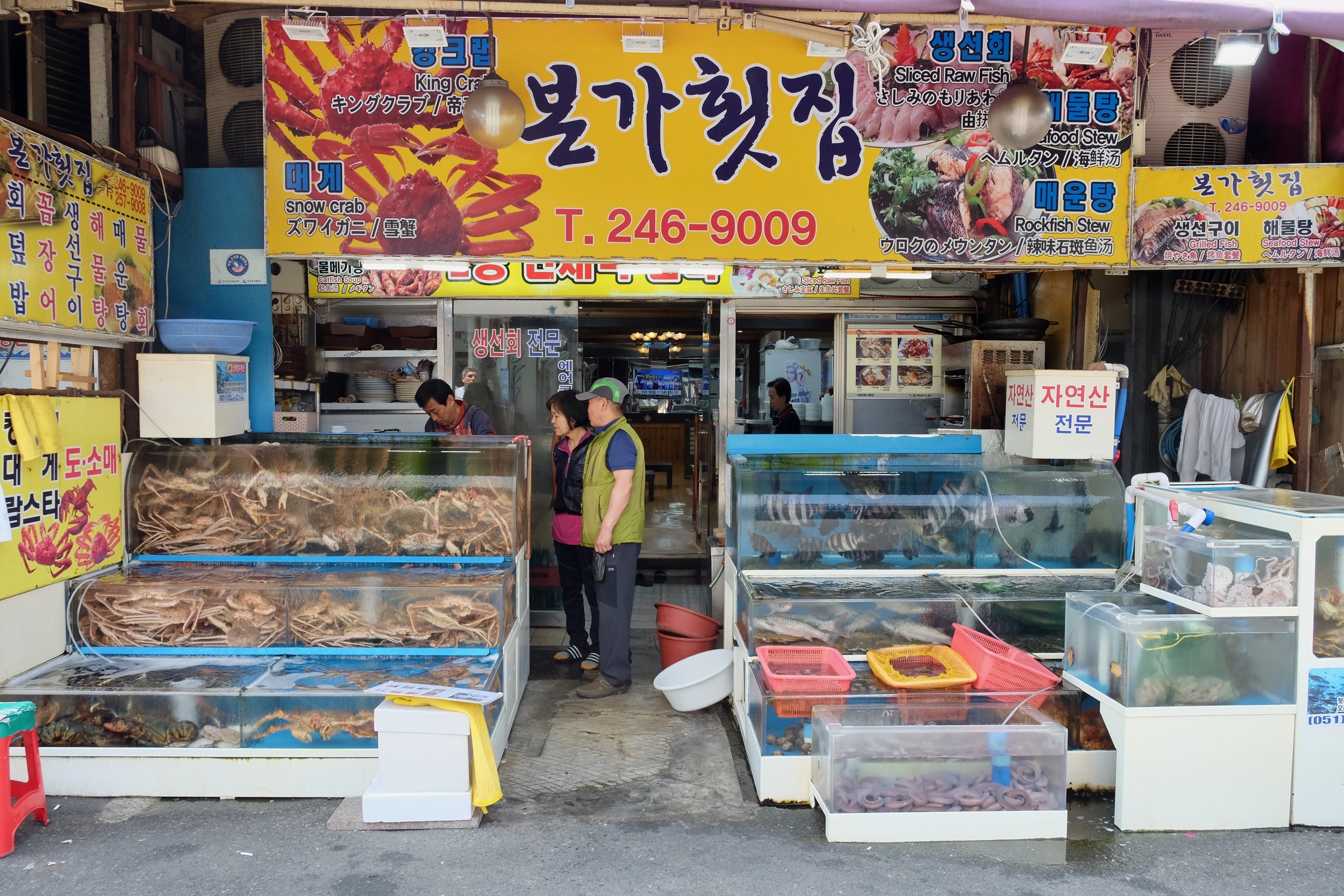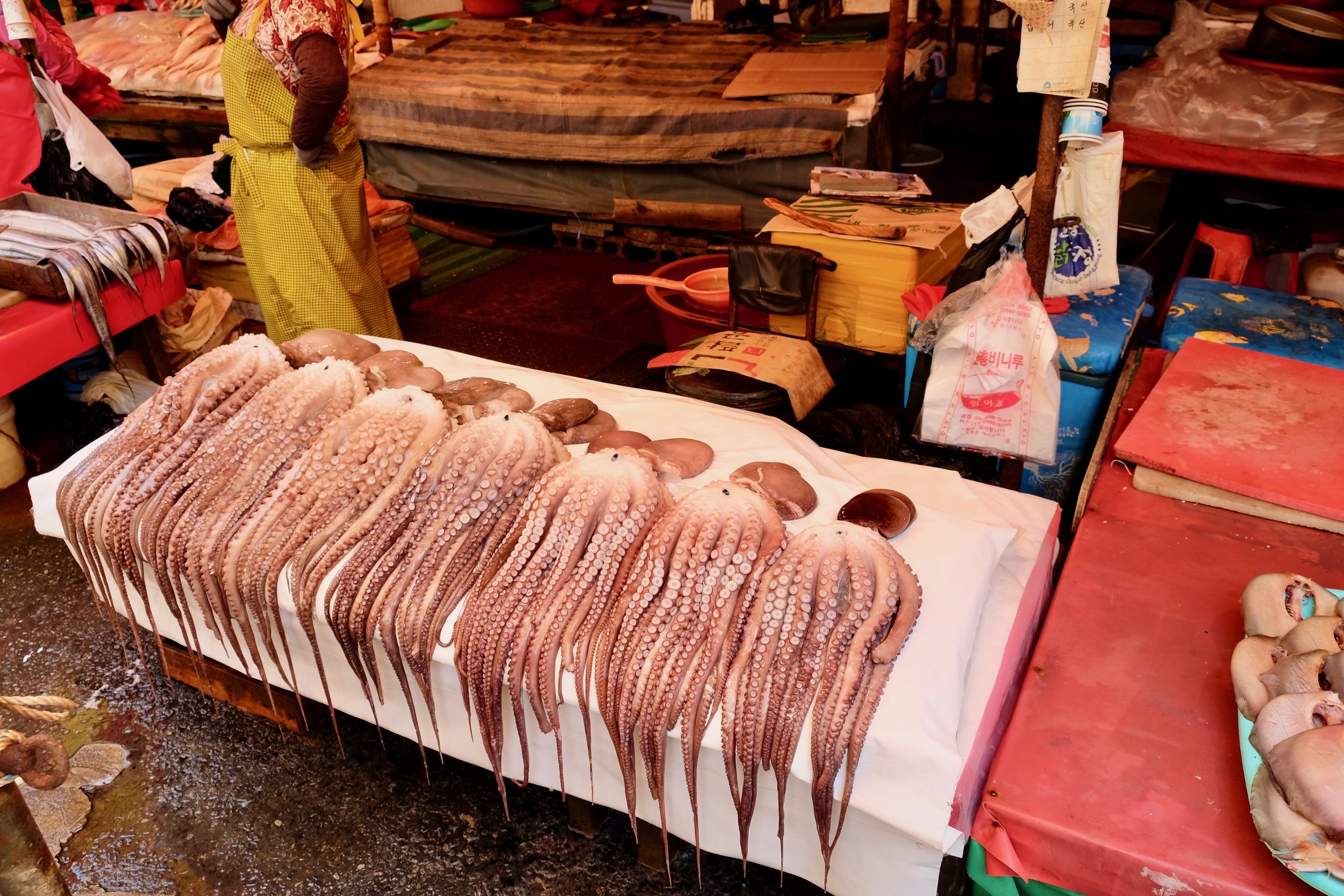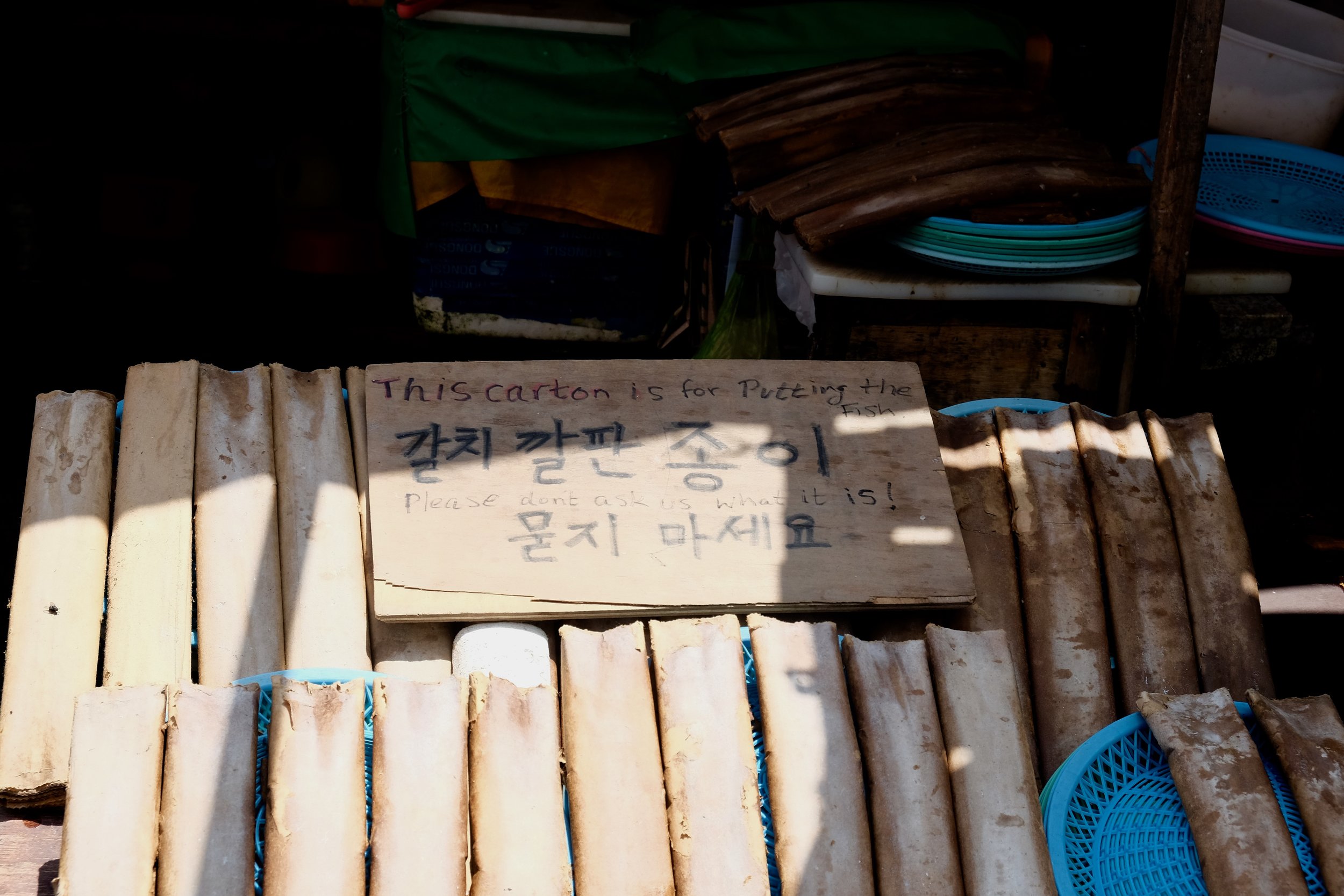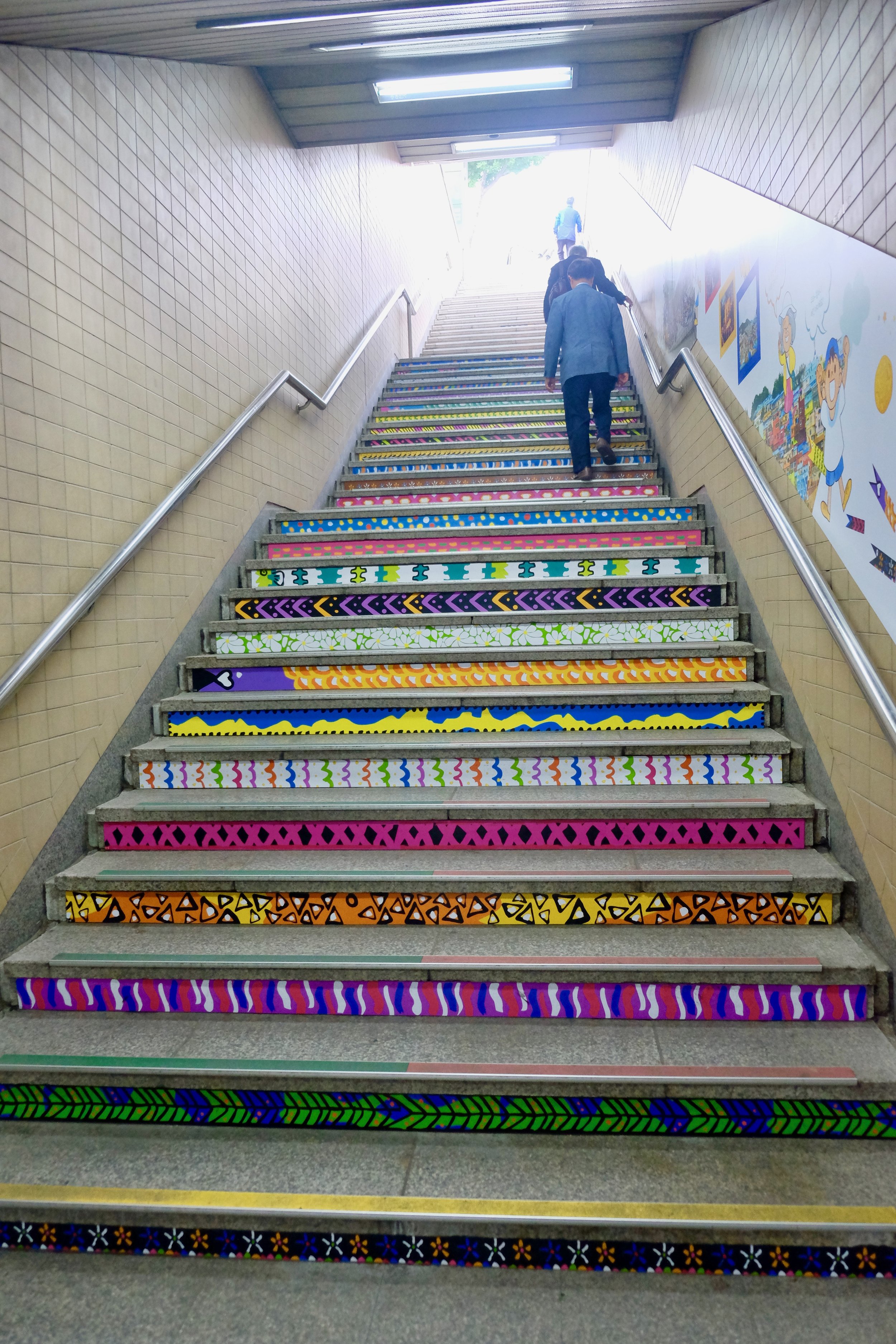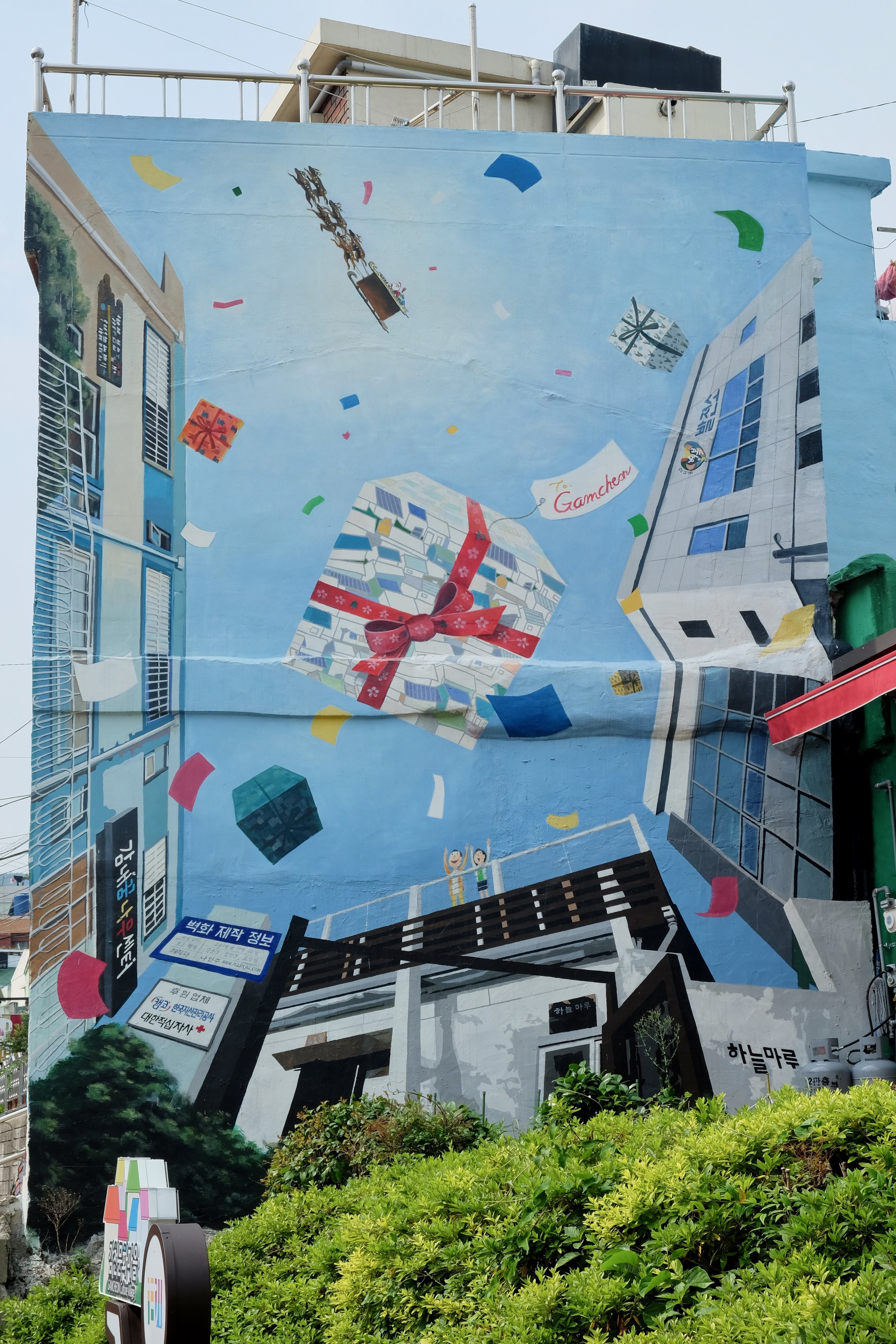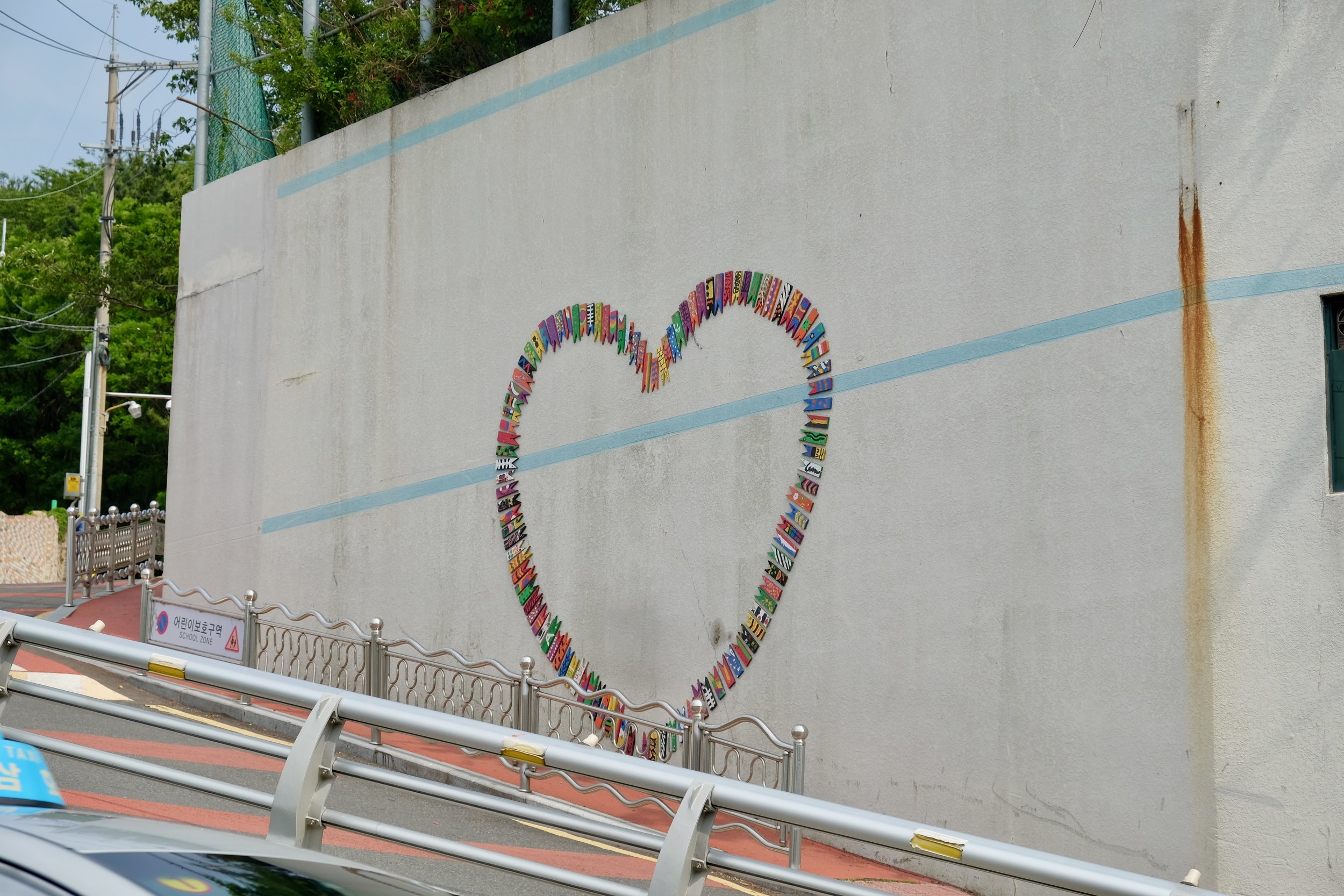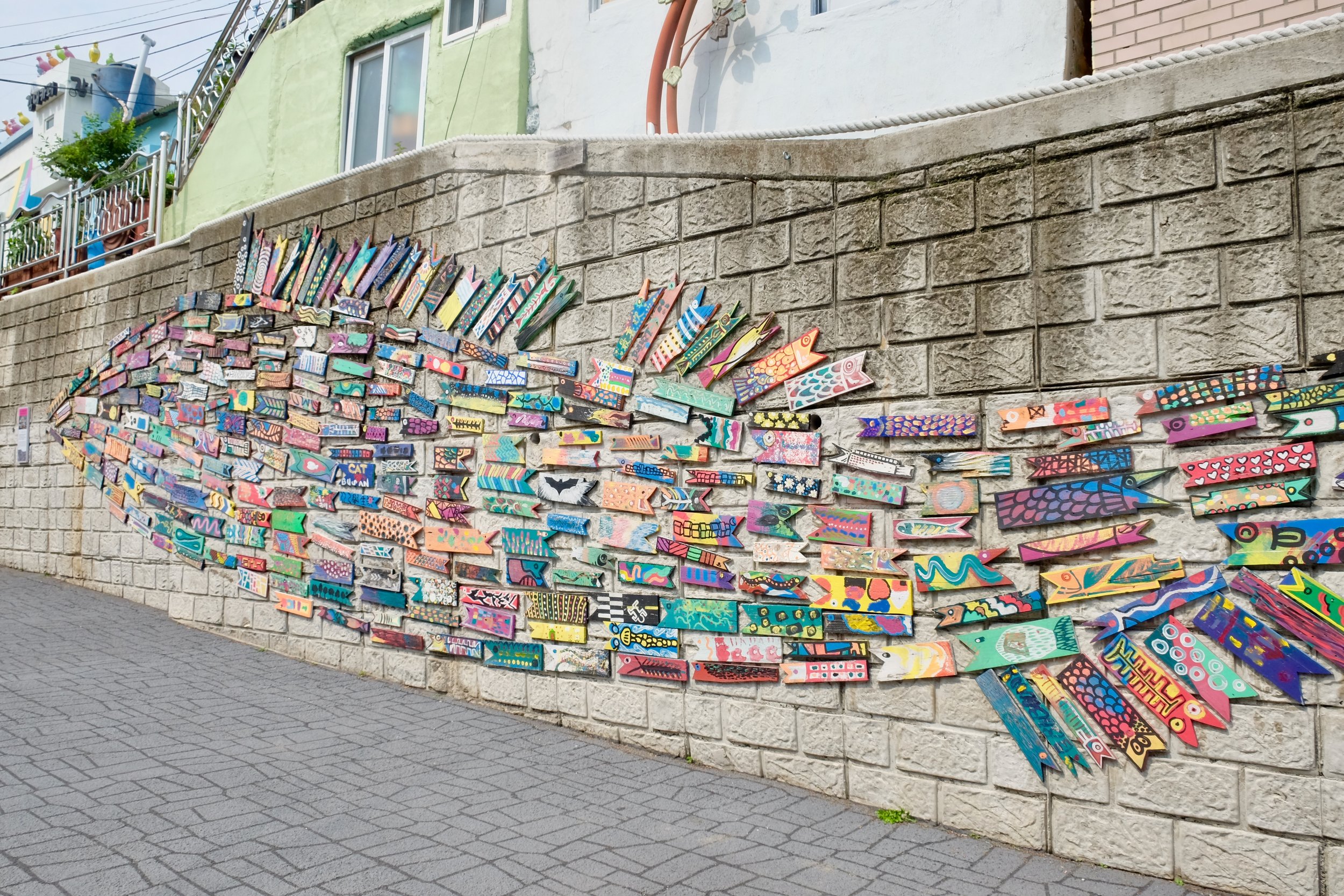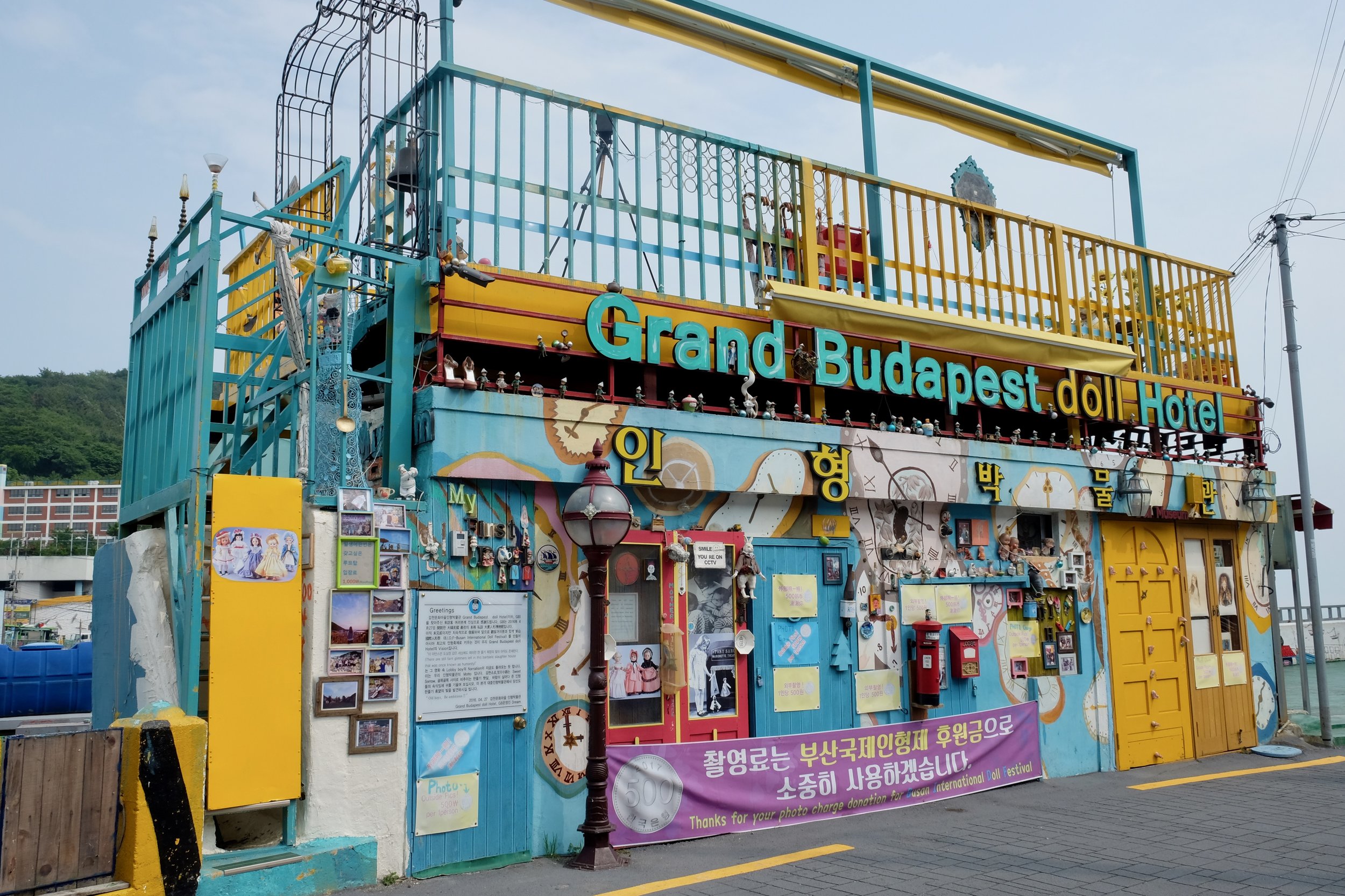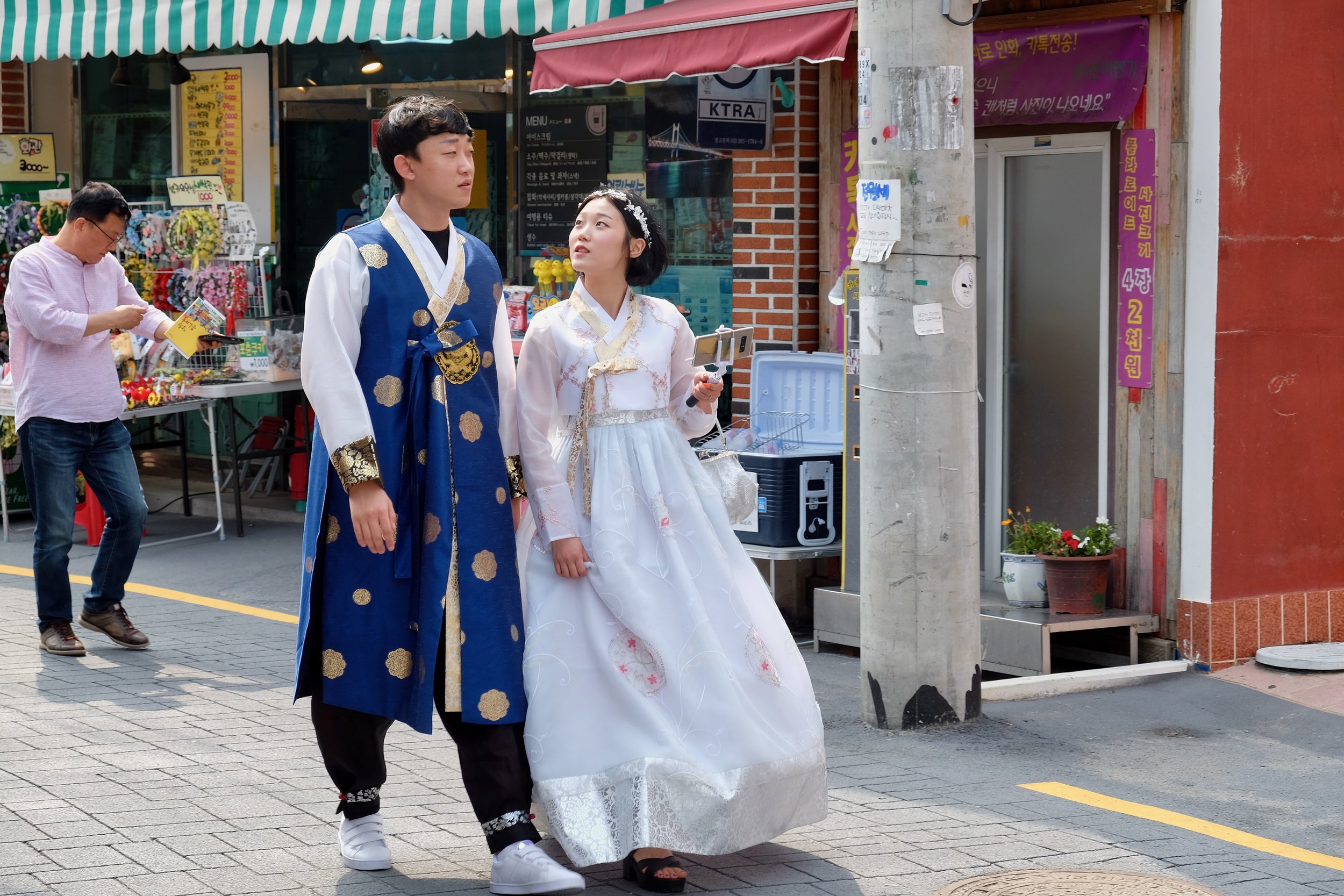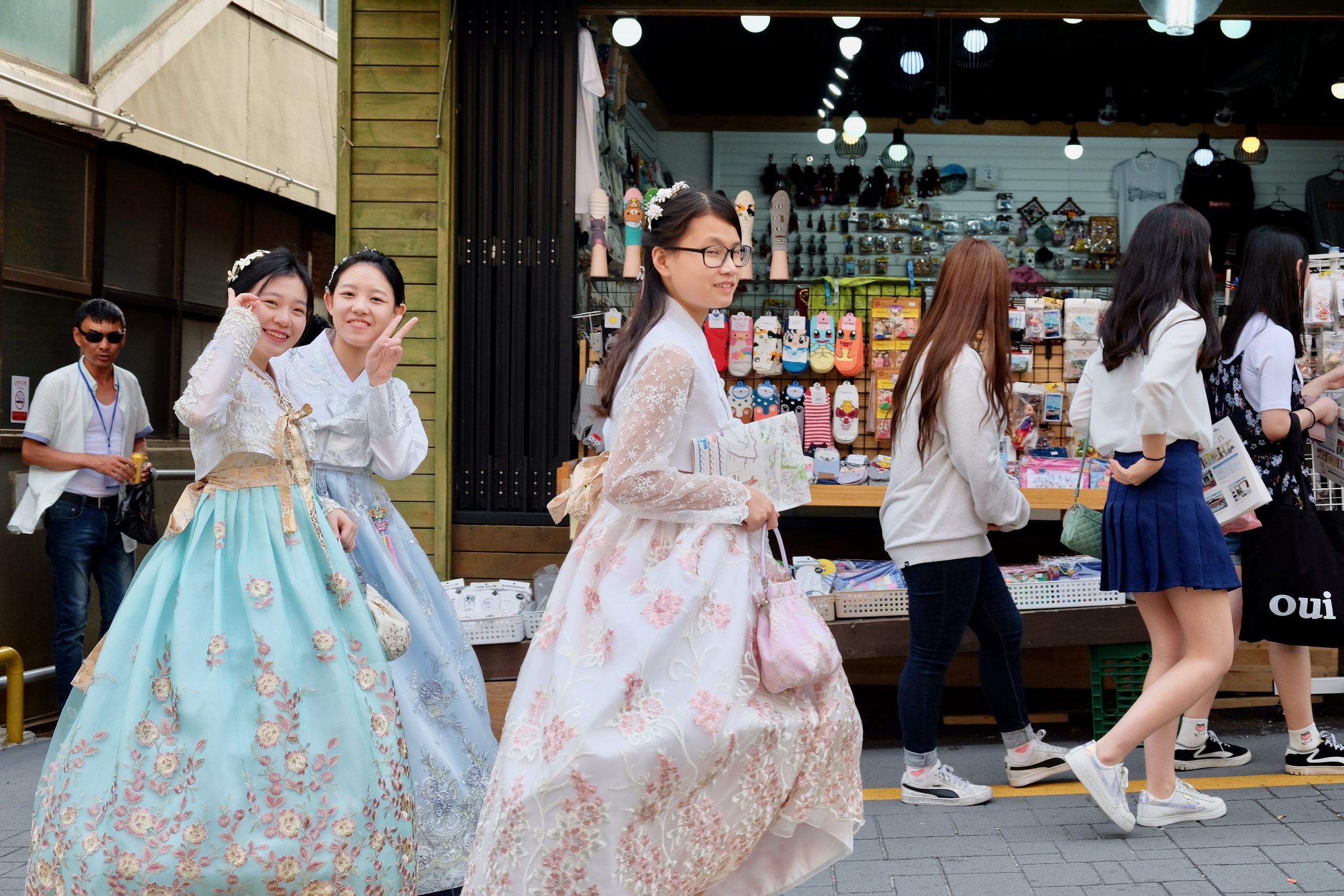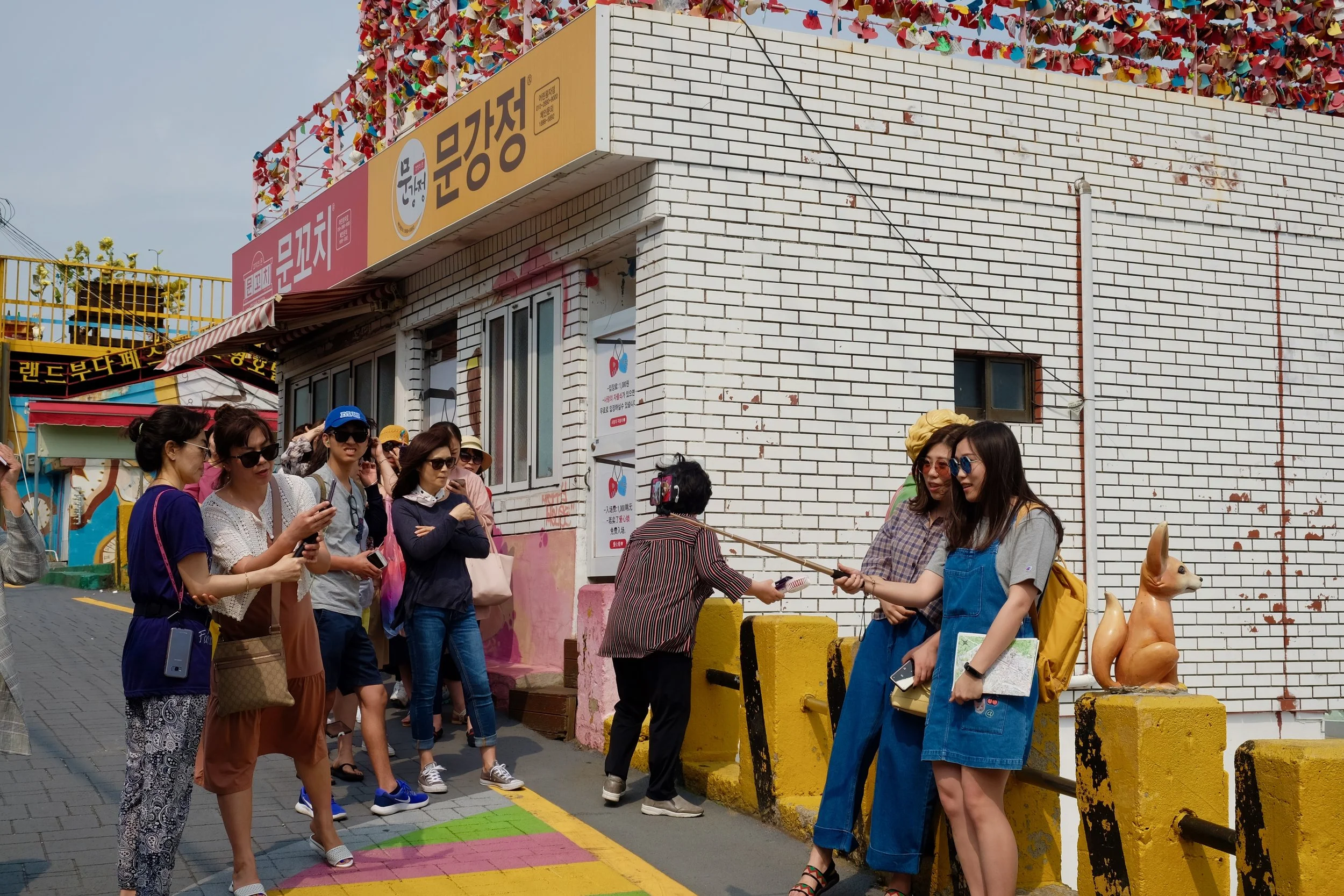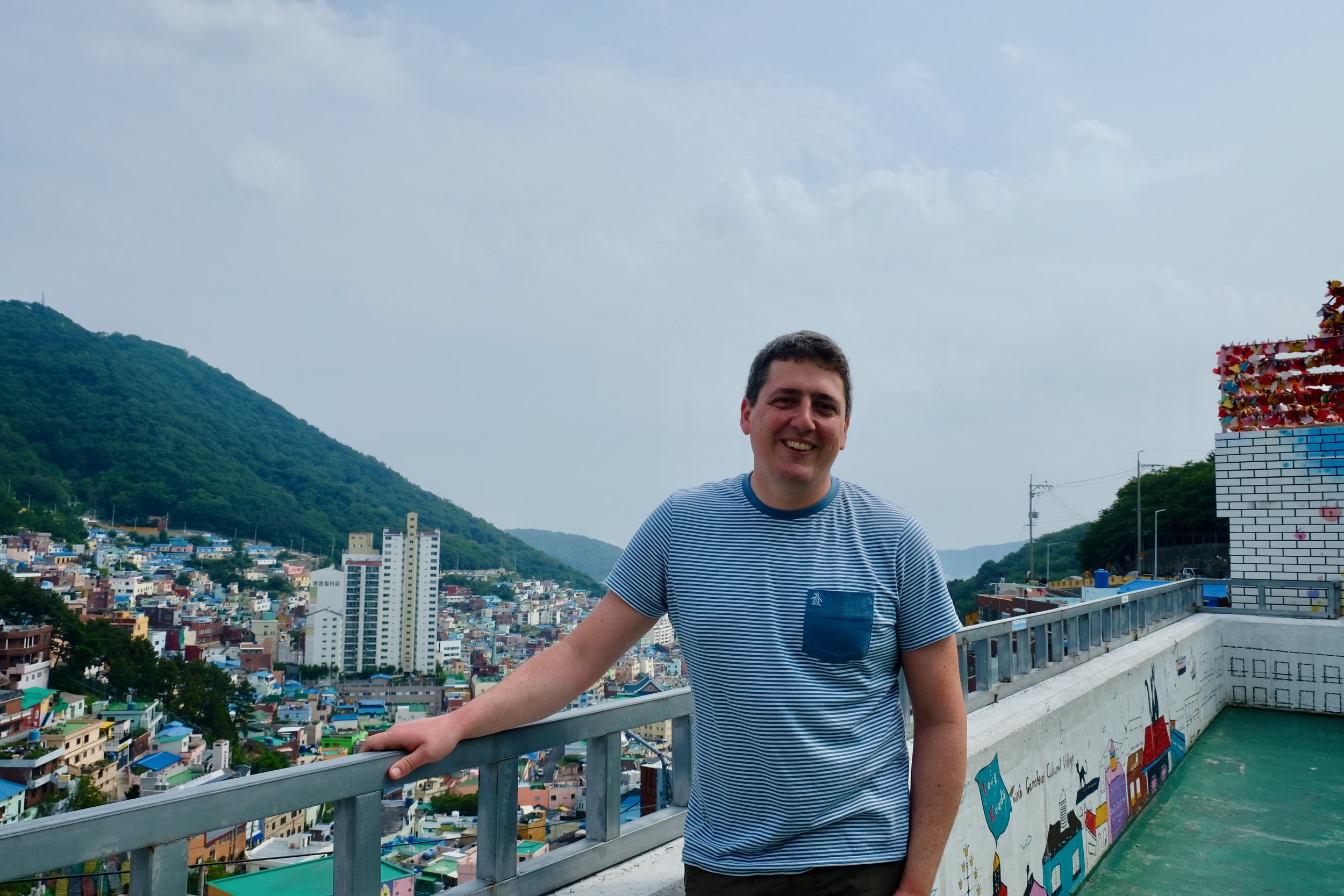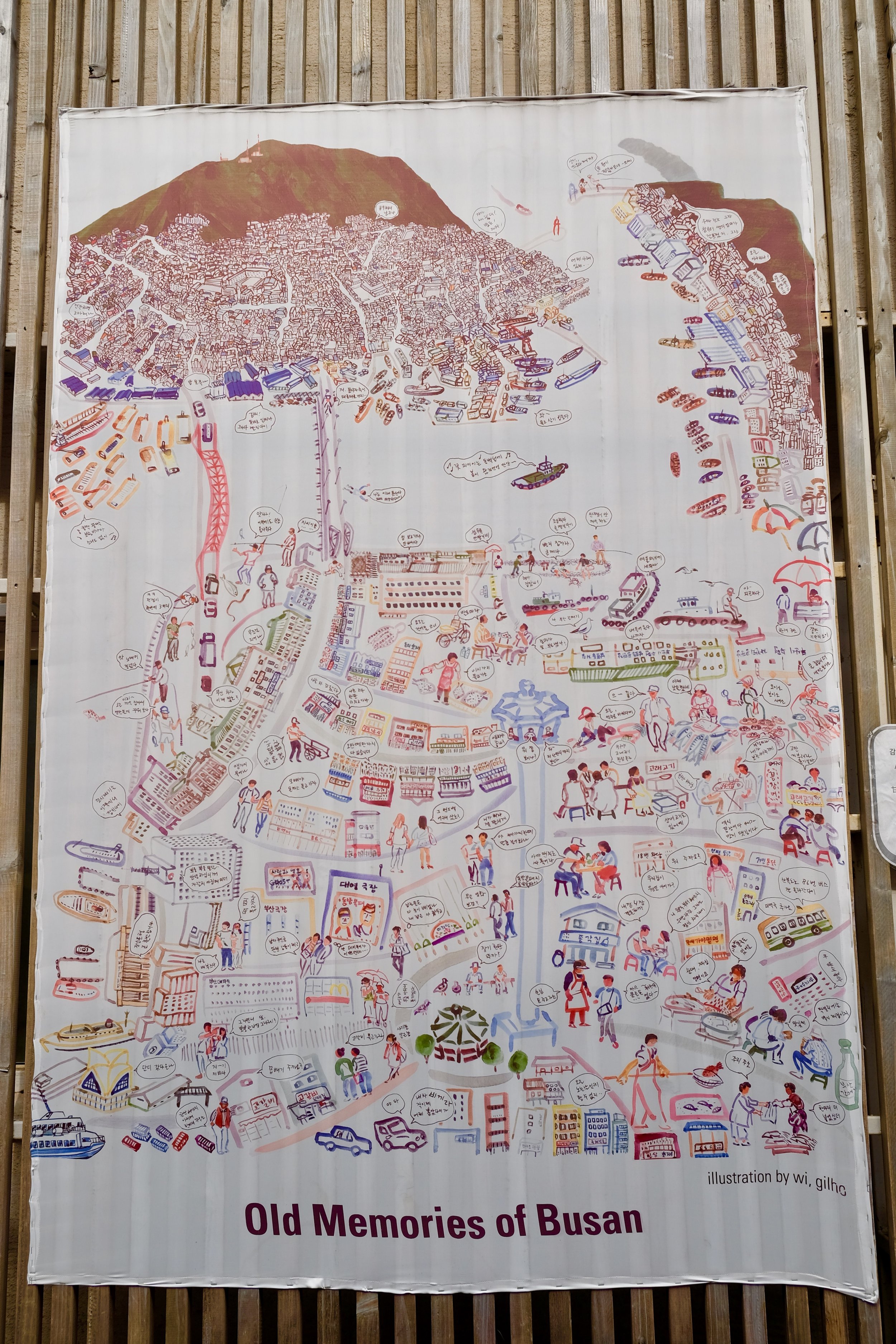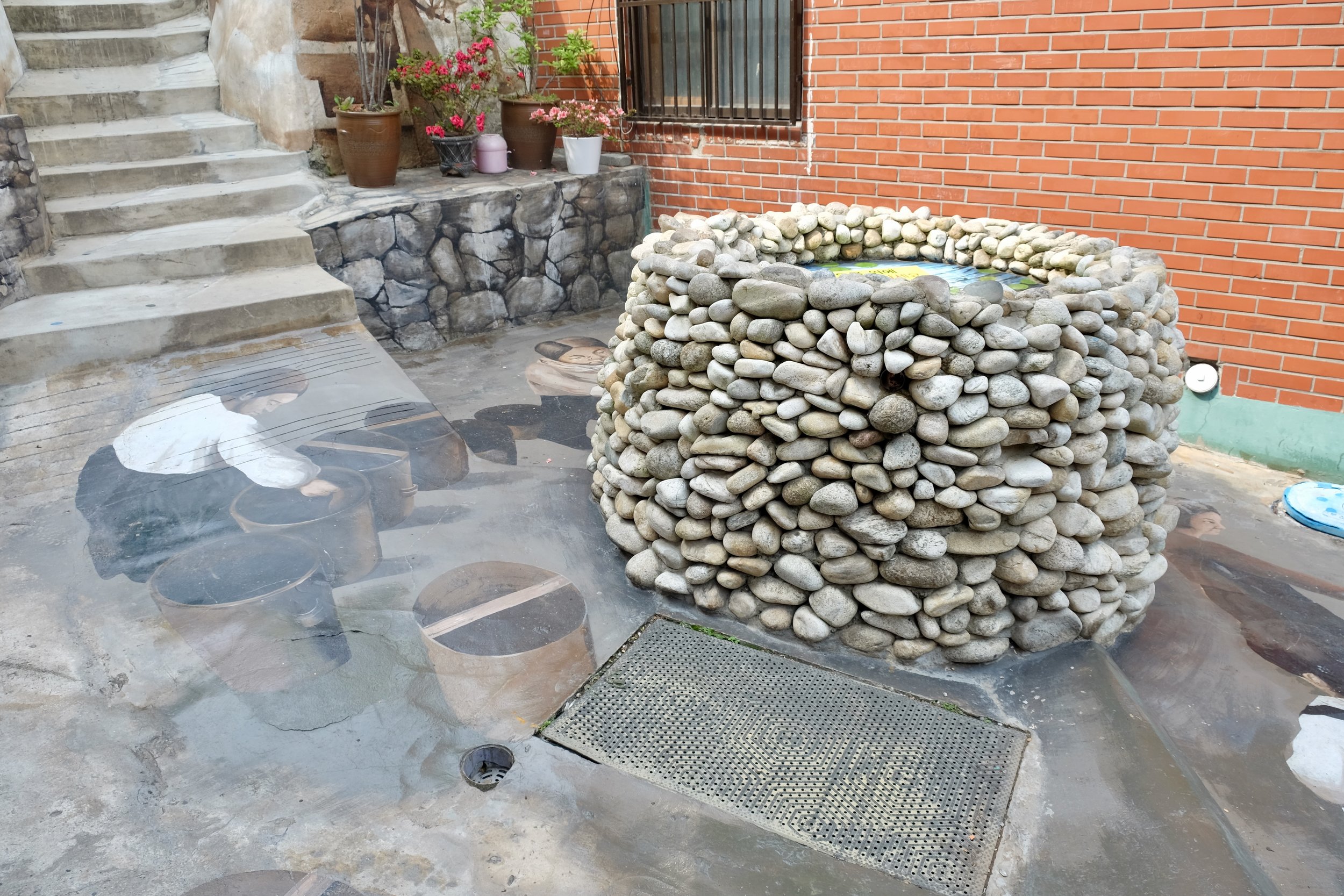The Number 25 Hotel doesn’t normally provide laundry service, but if you catch the older of the two front desk receptionists in a good mood, she might acquiesce with a cheeky grin. All in the name of the almighty Korean “service”. We collected our finished load in the morning, and thanks to her, we now had clean cycling kit for the second leg of our tour.
There were two places we wanted to visit on our second and final full day in Busan, the first being the renowned Jagalchi Fish Market. Located in the neighbourhood of Nampo-dong in Jung-gu, it is wonderfully atmospheric and has been used as a background set in numerous movies and dramas. The Jagalchi Festival in October provides a rare first-hand look at how the fish is prepared, and on any given day, there’s loads to see and (most importantly) eat.
Early each morning, the fish is delivered fresh out of the ocean by fishing boats, and the sellers work hard to clean and display them for interested passersby. The market opens daily from 8 AM until 10 PM and is free to enter and wander about. There are two sections in the market - an indoor market and outdoor stalls, with the former looking more like an aquarium than a marketplace.
52 Jagalchihaean-ro, Nampo-dong, Jung-gu, Busan, South Korea. Get off at the Jagalchi stop on the 1 line.
We watched this guy perfectly fillet a fish in a matter of seconds with about three strokes of the knife. Mesmerising.
Every kind of seafood imaginable (and not so imaginable) is on offer, with octopus and eels featuring quite prominently. Most stalls have small restaurants attached out back, and the owner will happily kill a fish of your choosing on the spot and fashion a stew or grilled dish for you. You’ll pay for the experience though, with an average lunch ranging between 15,000 - 25,000 won per person, so we opted to eat elsewhere but still enjoyed strolling around and smiling at the hawkers shouting their wares.
It shouldn’t surprise you to hear that it is incredibly smelly, so those with sensitive stomachs should either walk very quickly through or avoid altogether. Sensible footwear is also advised, as the indoor market floor is unusually slippery, and the last thing you’d want to do is fall face first into a bucket full of these:
Those are mantis shrimp, and they can probably pick you up and throw you.
We escaped the hustle and bustle of the port by dipping into one of the side streets for some Japanese food - this was our way of sampling the fish caught in the area without breaking the bank. But that wasn’t as straightforward as we hoped due to the alarming number of restaurants advertising bluefin tuna. Severe overfishing and lack of foresight have led this species to become endangered, and we didn’t want patronise any establishment that served it. Luckily, a yakitori restaurant sorted us out and we enjoyed donburi rice bowls and salmon nigiri for 24,000 won total.
Our final stop of the day was across town at the Gamcheon Cultural Village, a quirky, picturesque hamlet high up in the hills of Busan. It was built during the 1920s and 1930s, when Busan's city administration decided to relocate its poor Korean population to an area that was not visible to the port, but local enough to provide labor. It reminded us a bit of Rudy Giuliani’s crackdown on homeless people in New York City during the 1990s, banishing them to areas outside of Manhattan in order to clean the streets and attract future investment.
But this story has a happy ending, because the residents of Gamcheon decided to make the best out of a bad situation and bring joy into their lives by brightly painting their houses. After that, the village was reborn as a cultural hub, with the district received funding from various government offices for the purpose of urban regeneration. Today, it is home to many artists and ateliers, with a fantastic view of the East Sea and the city below to boot.
As a result, it is one of the most featured tourist attractions in the Busan, and because it was built on such a steep mountain-side slope, it’s also affectionately known as the "Machu Picchu of South Korea".
Never one to back down from a challenge, Neil thought it would be a good idea to walk up the hill to get there, as it was only “1.3 kilometres long and we’ve been through worse.” It took us a good half an hour (and a whole lot of stopping to catch our breath) to reach the peak, at which point Jess was hellishly annoyed and demanded a “refund” for the time spent. For everyone else who has a brain, there’s a charter bus which drops you off right in front of the entrance.
And then we stepped into wonderland.
Stag dos are the same the world over.
We ended back in Seomyeon for our final night in Busan. As we dug into a hot pot full of noodly and seafood goodness, we discussed what our next steps could be. Our legs were only just starting to feel normal again, so neither of us were ready to get back into the saddle just yet. But we also wanted to move on towards the west. We could take a bus for part of the way, but the southern part of the country is ridiculously mountainous, and we could do without that..
So we decided to take the express bus directly to Gwangju instead. This meant that we would miss the lush tea plantations that the southernmost part of the peninsula is famous for, as well as any chance of island hopping. But we would get to shave 4 days off our overall travel time which translated into more time off the bike to sightsee and relax. This is our honeymoon, after all.





